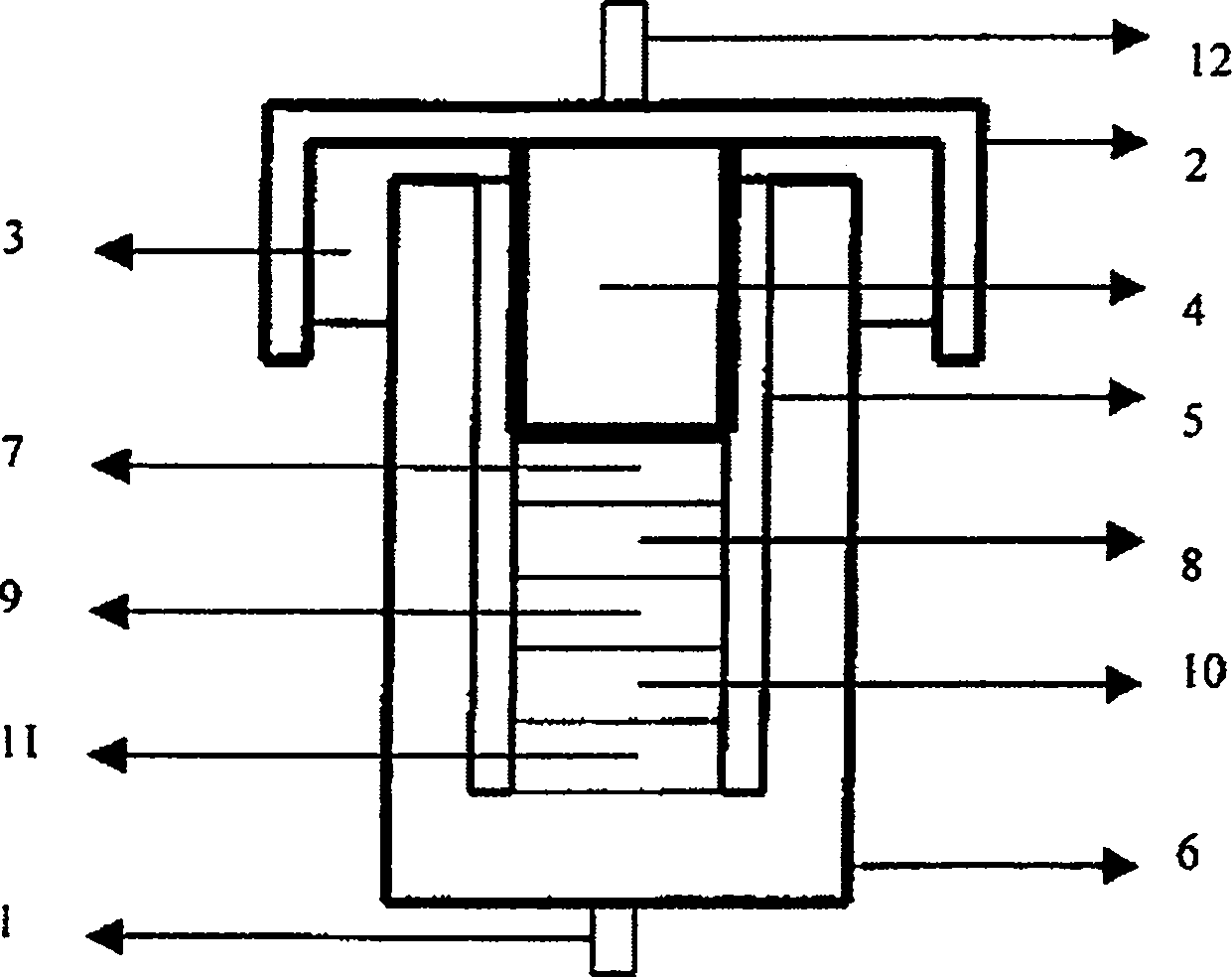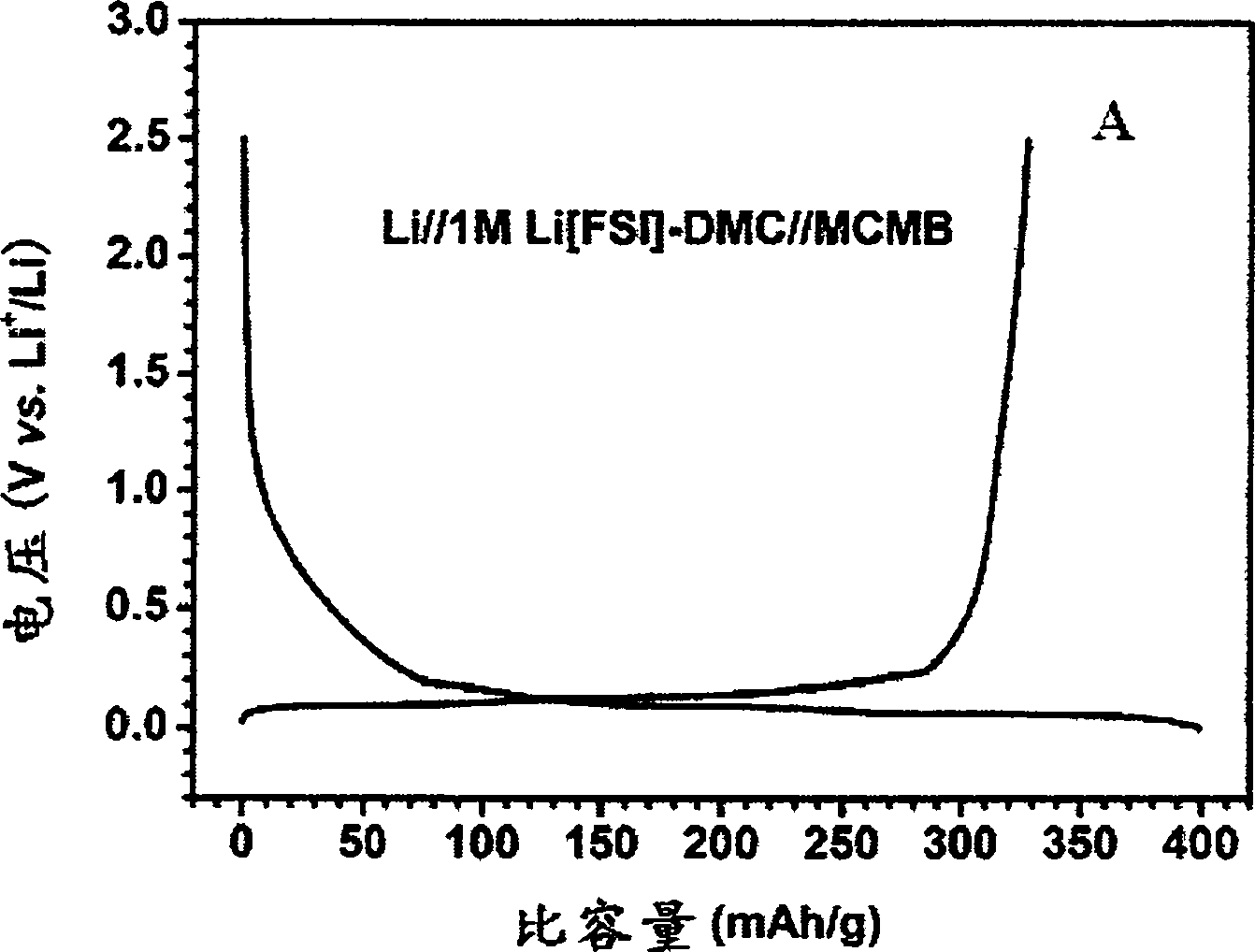Nonaqueous electrolyte material of fluorosulfonylimide lithium and application thereof
A technology of lithium fluorosulfonimide and non-aqueous electrolyte, applied in the field of non-aqueous electrolyte materials, can solve the problems of unsatisfactory flame retardant effect and the like
- Summary
- Abstract
- Description
- Claims
- Application Information
AI Technical Summary
Problems solved by technology
Method used
Image
Examples
Embodiment 1
[0057] Electrolyte solution preparation: dry the conductive salt component A lithium bis(fluorosulfonyl)imide (Li[FSI]) in a vacuum, and dry the dimethyl carbonate (DMC) of the organic solvent component B into a vacuum glove box ( The water content is less than 1 ppm). Weigh 18.7g Li[FSI] in a beaker, and slowly add DMC in multiple times under magnetic stirring to prepare an electrolyte solution with a molar concentration of 1.0M, and seal it for storage for later use.
[0058] Conductivity measurement: Drop the above electrolyte solution into a glass conductivity cell with platinum electrodes at both ends, use GDW6005 high and low temperature test box to control the temperature, and HP4192 impedance spectrometer to measure the impedance spectrum (5Hz-13MHz) to obtain the temperature range The conductivity is -80℃ to 60℃. The measured electrical conductivity at -80°C is 0.2mS / cm, the electrical conductivity at 25°C is 9.2mS / cm, and the electrical conductivity at 60°C is 14.6mS / c...
Embodiment 2
[0065] Electrolyte solution preparation: the conductive salt component A lithium bis(fluorosulfonyl) imide (Li[FSI]) is dried under vacuum, the organic solvent component B is DMC and ethyl triethoxysiloxane ((CH 3 CH 2 O) 3 SiC 2 H 5 ) (Referred to as silane for short) dried and placed in a vacuum glove box (water content less than 1 ppm). Weigh 18.7g Li[FSI] in a beaker and slowly add it to the mixed solvent of DMC and sliane (DMC:silane = 1:4, volume ratio) under magnetic stirring to prepare an electrolyte with a molar concentration of 1M Solution, sealed and stored for later use.
[0066] Conductivity measurement: Drop the above electrolyte solution into a glass conductivity cell with platinum electrodes at both ends, use GDW6005 high and low temperature test box to control the temperature, and HP4192 impedance spectrometer to measure the impedance spectrum (5Hz-13MHz) to obtain the temperature range The conductivity is -80℃ to 60℃. The measured conductivity is 0.03mS / cm at -...
Embodiment 3
[0069] Electrolyte solution preparation: dry the conductive salt component A, lithium bis(fluorosulfonyl)imide (Li[FSI]), dry the organic solvent component B, DMC, and trimethyl phosphate (TMP) In a vacuum glove box (water content less than 1 ppm). Weigh 18.7g Li[FSI] in a beaker, slowly add it to the mixed solvent of dimethyl carbonate (DMC) and TMP (DMC:TMP=1:1, volume ratio) under magnetic stirring in several times to prepare The electrolyte solution with a molar concentration of 1.0M, sealed and stored for later use.
[0070] Conductivity measurement: Drop the above electrolyte solution into a glass conductivity cell with platinum electrodes at both ends, use GDW6005 high and low temperature test box to control the temperature, and HP4192 impedance spectrometer to measure the impedance spectrum (5Hz-13MHz) to obtain the temperature range The conductivity is -80℃ to 60℃. The measured conductivity is 0.1mS / cm at -80℃, 8.7mS / cm at 25℃, and 16.8mS / cm at 60℃. The conductivity of...
PUM
| Property | Measurement | Unit |
|---|---|---|
| melting point | aaaaa | aaaaa |
| thickness | aaaaa | aaaaa |
| diameter | aaaaa | aaaaa |
Abstract
Description
Claims
Application Information
 Login to View More
Login to View More - R&D
- Intellectual Property
- Life Sciences
- Materials
- Tech Scout
- Unparalleled Data Quality
- Higher Quality Content
- 60% Fewer Hallucinations
Browse by: Latest US Patents, China's latest patents, Technical Efficacy Thesaurus, Application Domain, Technology Topic, Popular Technical Reports.
© 2025 PatSnap. All rights reserved.Legal|Privacy policy|Modern Slavery Act Transparency Statement|Sitemap|About US| Contact US: help@patsnap.com



